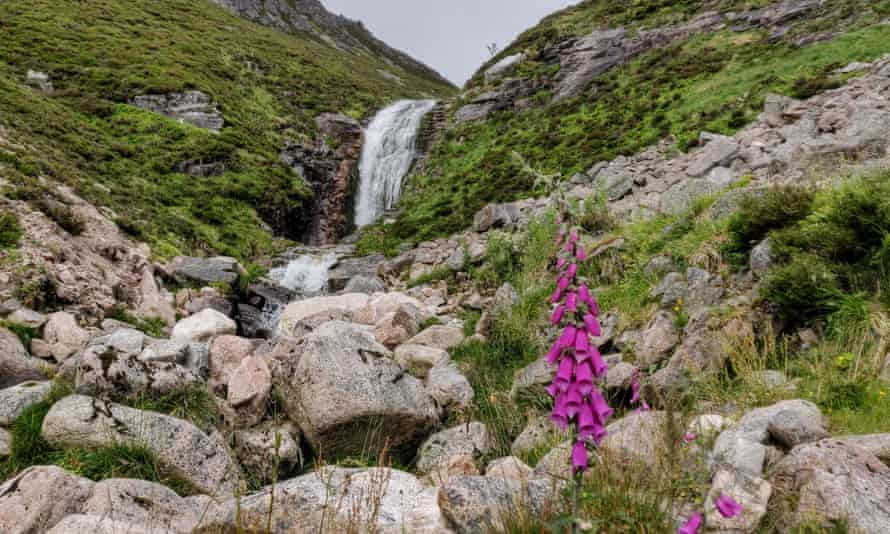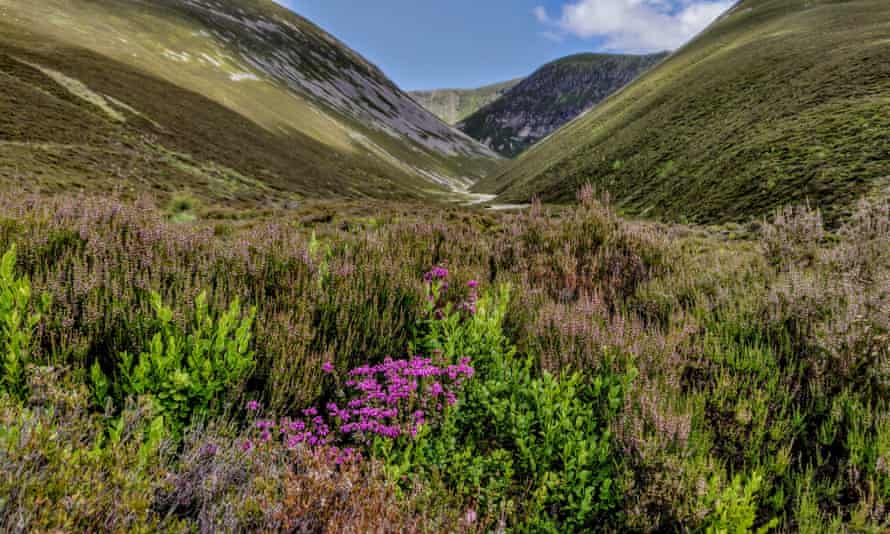Country diary: reward awaits the hiker who makes it here
Glen Feshie, Cairngorms national park: This almost unreachable spot is quietly thriving with flowers rarely seen in these mountains

There is no path leading into Coire Garbhlach. From a distance it looks impenetrable, a steep-sided cutting that twists and turns deep into the flank of the Feshie hills. Even from its base in the wide glen, you can only glimpse the outer ramparts, its inner folds hidden and rarely explored. Garbhlach means “rough” and the old stalker’s trail that once wound through it has long since been rerouted to a Land Rover track over the hill.
To penetrate, we have to pick our way up the stony streambed or push through thick heather on the slopes. But the slog is worth it. Chiselled down by glaciers, the rock here has its origins 700m years back in the Dalradian sediments at the bottom of the Iapetus Ocean. Mostly schists, it is much older and more crumbly than the granite that covers most of the Cairngorms, and the combination of its soils and the relative shelter fosters a more varied range of flora than is usual for these mountains.
At the bottom, where the Allt Garbhlach stream threads across the moor, we pass the classic Scots icons of the three heathers and several different thistles: one nodding bloom is visited by a pair of tangerine fritillary butterflies. Bright red and green sphagnum mosses form spongy mounds, as bog cotton, harebells and grasses catch the breeze. We pause many times to scoff blaeberries, staining our fingers and lips, though the cloudberries are not quite ripe and the small black crowberries still too tart. And increasingly, we’re stopped in our tracks by the wildflowers. Golden spires of bog asphodel, foxgloves parading like princesses, sprays of common yarrow, vibrant marsh marigolds trembling in the burn, purple clusters of selfheal and enough wild mountain thyme to make you burst into song.

Higher up, we find the flossy fronds of alpine lady’s mantle, exquisite saxifrages with their star-like petals, bunches of pink campions, mountain azaleas and willows creeping across the rock, and clumps of roseroot, a succulent that would look at home in a desert. Up close, each leaf and flower reveals hidden worlds of pattern and shape, colour and scent, a tiny echo of the unfolding wonders of this whole wild corrie.
Everywhere, these astonishing flowers rise like small flags of triumph, testament to the survival of delicacy in a harsh terrain, to the power of new life from ancient ground.